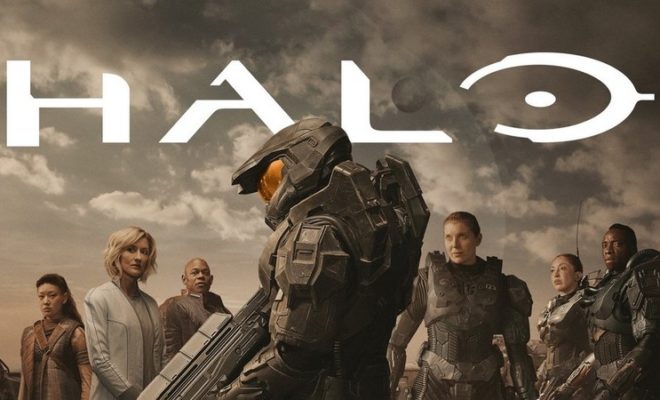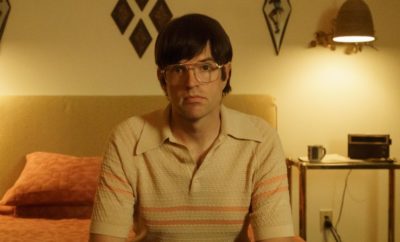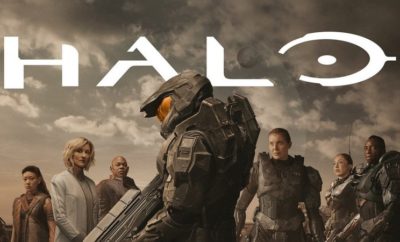
Interviews
Steven Kane & Kiki Wolfkill – Halo
By: Jamie Steinberg
Q) I wanted to ask you with all these new characters that are being introduced into the series, is there any chance for carryover into the video games? Do you think will we see any of these characters make that jump?
Kiki: Yeah, I mean, I would say the the nature of this timeline is to allow for that. Since it is sort of a branch of canon. The addition of the new characters and we add new characters to the games often, the addition of these new characters namely Quan and Makee, were really to move the story forward. Like Quan (Yerin Ha) was very much about presenting a human face and, frankly, an instructionist voice to sort of lend a facet to that part of the Spartan story. And with Makee (Charlie Murphy) that was our way into really understanding and for the audience to really understand The Covenant and their motivations and also to create an interesting parallel with Chief (Pablo Schreiber). And so both of those characters and disturb that serve that story. But, yeah, I mean that the idea is if it makes sense for them to go into the game space, or vice versa, like all of that is open. We have a little bit of a chronology difference. So, with that in mind, there’s definitely room or that to happen in the future if it’s additive if it’s additive to the game.
Q) There have been multiple attempts to adapt Halo for mainstream audience like “Halo: Nightfall.” What was it adapting the Halo universe?
Kiki: I can speak to “Nightfall” a little bit, which had Michael Colter, who’s a fantastic actor, and we’re so lucky to have Bokeem [Woodbine] in the series. I think “Nightfall” was a way for us (and the same with “The Fall of the Reach”) sort of dabble in live action and dip our toe in the water around bringing the world to life in live action, but they’re also pretty narrow slices of the universe and pretty self contained stories that were designed to support story in the game. This is meant to be a standalone Halo experience. It’s meant to be differentiated from the game experience so that we can give fans more and express the Halo universe in a really different way, like, rich and detailed and in ambitious way. And I think we learned a lot from those smaller experiences about what it does take to adapt visually the the universe. But I think what this series gives us is this long form storytelling, which is so critical to focusing on character development, which is something that is much harder to do in ninety minutes, and much harder to do in the same way in the games because of the first person perspective. And so this is really, really a different beast.
Steve: And it was fun.
Q) For over a decade this has been in different stages of development. How does it feel to be the group to finally make it happen to be on the screens and things like that?
Steve: I mean, I feel like I stand on the shoulders or the result of work that was done before me and the lessons learned from 343. So I’m proud to have been there to land the plane and to be there for the making of the show. And for me, it was a three year journey. So, I feel a sense of completion That’s pretty powerful. But I know Kiki can speak for itself. To be part of that and to see the relief on their eyes and that we able to pull this off. It makes me feel great that. I was lucky to have landed at this moment in the timeline.
Kiki: Apparently and I’m now good at marathons. We used 343 and I cared so deeply about doing this and it was hard. It was a hard journey and clearly it took ten years. But it was just something that we weren’t willing to give up on. And so I think there is a lot of ups and downs and fits and starts and all of that being worth it to end up with the creative team that we did and all of those pieces come together and even once in production, all of the challenges with COVID and all of that. But hope is what Halo is about and that was just something we wouldn’t give up because we believe so deeply in being able to pull this off.
Q) Kiki, Halo is such a big world and we can see it in how perfect the graphics and CGI is. How important was for the two of you to make sure that every single detail was perfect when it comes to recreating this world?
Steve: If you could be in our Wednesday calls, the calls you have even before Wednesday, where we go through every single visual effect shot ,every single shot with a screen or a logo and we micromanage every little bit because we know we want to get it right and we know that people care are going to be able to freeze frame and find things for mistakes look for Easter eggs. Hopefully, they find more Easter eggs that mistakes. Everything you see on the screen, because of the we’re in this world everything had to be conceived and built and whether it’s a set prop or wardrobe thing or CGI. It took a lot of work and so we’re just so thrilled to see it come together ourselves because literally it’s iteration after iteration of checking a plasma sorter. It was “does that explosion look right” or “does that alien look right.” It was just teams in Seattle, L.A., London and Toronto. I mean all over the world trying to build this thing so it was a great undertaking and I think it pays off.
Kiki: And when you’re world building, because I think you have to look at this both from a Halo audience perspective and all of the details that they’re going to be scrutinizing, but also from a new audience perspective…When you’re world building those details are so critical to people buying into your universe, right? You can’t miss details or have the kinds of inconsistencies that will erode credibility in this world you’re trying to get them to buy into and become part of. And so I think from a Halo franchise perspective, there’s a level of detail that fans want and deserve. And then from a new audience perspective, there’s a level of detail that needs to make that world something believable and something that they’ll buy into. The FX call that Steve was referring to, I was saying the other day there is literally no shot to short for something to not be seen like every single frame will be scrutinized.
Q) Steven, I wanted to talk about writing those first two episodes because there’s a great balance between the action and the emotional reactions are almost as strong or almost as visceral. What were the discussions that you had in the writing process of finding that tone and finding that perfect balance?
Steve: First of all, I think action sequences need to have a story as well. I’ve done a lot of shows with action. And you can just feel it when you’re like, “This is just bang, bang, bang. I’m not feeling anything. We’re just trying to be cool.” And to me action sequences work when they have a beginning, middle and end and a character you care about and the villain you’re invested with. And so that became ways to reveal character. So in our opening episode, we get to reveal Quan (Yerin Ha) and to see her see her father under fire and reveal the Spartans and the other things we’re dealing with. And then as far as the balance between that, I think it’s like music your you have your big loud spots and the soft spots. And for us, you need time to process. First, you need to build up to the action and you need time for characters and for the audience to process the action. So, we also know that it’s a franchise with a first person shooter type game, and we didn’t want people to think this show is just going to be about action shooting that it’s about characters. And so in those quieter moments, we see not only these characters in different situations, we also see the effect of this violence on people, the effect of the war on people. So, everything feels grounded and real and not just cartoonish or sort of exciting. So if there’s a battle real people get hurt, real losses are incurred. And real thinking has to get done back home about what are we going to do next and how we’re going to win this war for our existence. Existential stakes are so high. So, all that goes into if you want to keep the audience engaged in a story, all those states have to be felt. And so they get expressed through action or through quieter moments with equal distribution.
Q) Steve, if you can talk about what you saw in Pablo [Schreiber] that really made you want him to embody Master Chief, or maybe some tips you gave him while he was also filming that made him a better Master Chief.
Steve: Well, first of all, I showed him my workout regimen. I said, “You got to work out as much as I do. And if you do that well, you’ll become the Master Cheif.”
Kiki: [laughs]
Steve: You’re laughing a little too much. So, no, honestly I’d follow Pablo’s career for a long time since “The Wire” and I’ve always been a fan and when his name came across….I always liked the fact that he has this great physical presence and strength, not just size and power, but also control over his body and ability to sort of inhabit this kind of role. But also he has this sort of vulnerability to him, both visually and emotionally, that you say, “Okay, this is going to be a character who I’m gonna be able to get inside of and feel.” And the proof of that is that you can feel his acting even when he’s covered with the helmet and the armor. Just by hearing this voice, you can say, “Oh, this person beneath that armor , I want to get to know more.” So I think it was just a was a great fit. And once he started doing my workout regimens, I think he was able to keep up with the physical demands of the show. And that was the only advice I could give him.
Kiki: I think it’s really the ThighMaster.
Steve: Yeah, give my Thighmaster and my ab roller. And easy on the goulash. That was my mantra.
*CONFERENCE CALL*





You must be logged in to post a comment Login